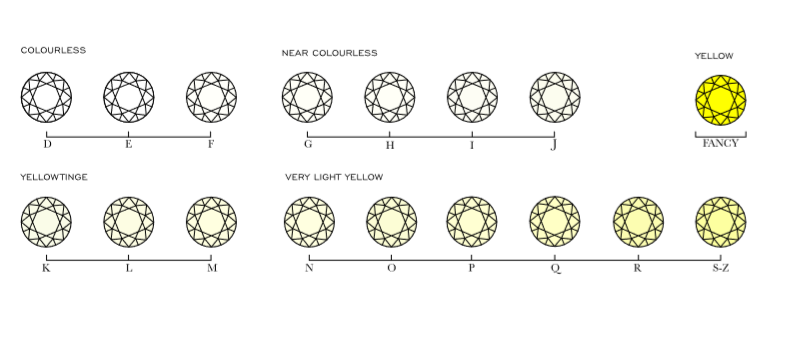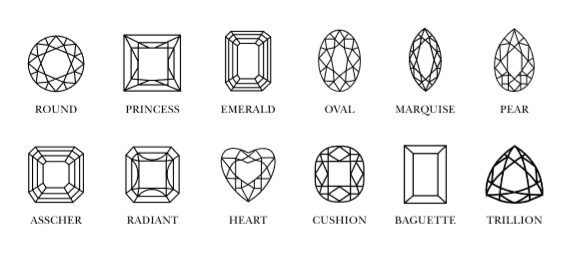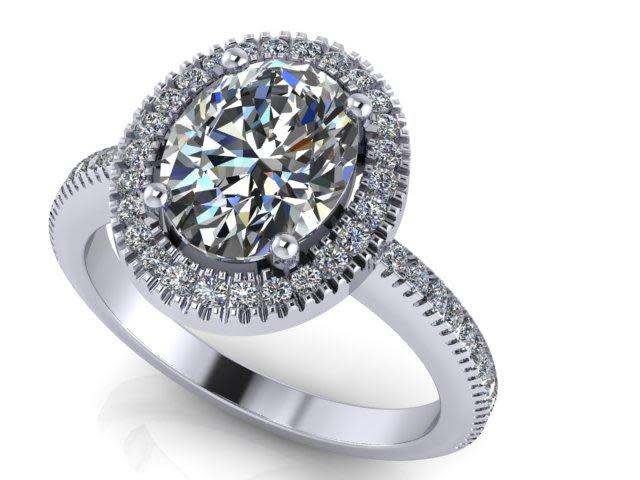Buying a diamond: The beginner's guide
Buying a diamond often goes hand-in-hand with a special moment in life—from engagements to anniversaries and birthdays—so there can be a lot of pressure to get it right. But how do you ensure that you’re getting the best stone for your money?
With a highly technical valuation system and a huge body of information on the subject, buying a diamond can often be an overwhelming prospect, so it makes sense to have as much information in your back pocket before you take the plunge.
Fine jewellery expert Roxanne First shared her tips on shopping for a rock.
First get to know your four Cs
Diamonds are categorised by the 4 Cs: Cut, Colour, Clarity and Carat.
All four C’s impact the look of a diamond as well as its value. Every diamond is unique – no two look the same.
Cut
Cut refers to the geometric proportions of the gem. A diamond’s cut affects its sparkle and brilliance. Precise workmanship is required to cut a diamond so its proportions, symmetry and polish maximise its magnificence. While high grades of colour and clarity contribute to a diamond’s appeal, it’s the cut that determines the symmetry of the stone’s facets, its overall proportions, and its ability to reflect light. Of the 4 Cs, cut is the most difficult to determine; it’s an incredibly technical and scientific process.

Colour
The appearance of a diamond is significantly influenced by its colour, which ranges from D (colourless) to Z (light yellow). A diamond’s value is scored by how closely it approaches ‘colourless’ – the less colour, the higher the value. A colourless diamond will exude flashes of light in a spectrum of hues. Colour in a diamond inhibits its ability to reflect light. We don’t recommend people to go lower than an I in colour.

Clarity
The clarity scale contains 11 grades, ranging from IF (internally flawless) to I3 (included grade 3). Inclusions are nature’s birthmarks, the characteristics that make each and every diamond unique. The fewer visible inclusions and blemishes a diamond has, the better the clarity and the more rare and valuable it is. Clarity grades are based on the number, size, relief and positions on the inclusions under x10 magnification. We don’t recommend people go lower than SI in clarity.

Carat
Carat weight is the measurement of what a diamond physically weighs. Since 1913, the weight of diamonds and gemstones has been measured in carats. 1 carat is equal to 0.2 grams. All else being equal, diamonds of a greater carat weight are exponentially more valuable than diamonds of a lower carat weight.

It's important to identify what you want to focus on and work the other 4 Cs around it. So if you want size, you compromise on colour to fit it in budget. Some will prioritise colour over cut, while some might forgo clarity for size. There’s no right answer.

Then, remember these 5 key tips...
1. Choose a jeweller who’s been in the game a while
The easiest way to tell if a jeweller is reputable is to find out the number of years they’ve been in business. As with any other industry, only successful ones survive – so a long career is a good sign.
2. Always check a stone's certification
When investing in a stone, it is important that the stone is certified, otherwise you just don’t know what you're buying. The most reputable diamond grading board is the GIA (Gemmology Institute of America). The GIA is the most respected (within the diamond industry) and their certificates hold the most value.
Diamonds are still graded by the human eye, so it’s important it’s done by a trusted board. The diamond is given a GIA report number, which gives you all the details of the stone – including cut, colour, carat and clarity. Sometimes this number is also lasered onto the stone, which can be checked with a microscope.
HRD Antwerp (the Diamond High Council, created as an alternative to the Gemological Institute of America in 1973) is also well respected but in our experience I would avoid boards like EGL (European Gemmological Laboratory).

3. The setting is everything
If the setting is not up to standard, it will not do the centre stone any justice and the ring will also not wear well with time. If it is too fine, the stones could fall out, while if the setting is too heavy, the ring mount (setting) might not let enough light into the stone(s), and therefore not show it off to its full potential.
At Roxanne First, we talk clients through every step of the design, from inception, to a CAD to a 3D Wax mould (of your ring) before it is cast. This means you really are part of the process and that’s pretty special.

4. Check it's ethical
How a diamond is mined is of the utmost importance and also the responsibility of a buyer to check they are buying a stone from a reputable source.
At Roxanne First, all of our suppliers are Members of the RJC (Responsible Jewellery Council). RJC members are committed to the council’s Code of Practices – an international standard on responsible business practices for diamonds, gold and platinum group metals. The Code of Practices addresses human rights, labour rights, environmental impact, mining practices, product disclosure and many more important topics in the jewellery supply chain.
You can avoid buying a conflict stone or ‘blood diamond’ by shopping with jewellers that are registered with the Kimberley Process Certification Scheme. This scheme was established in 2000 to prevent the buying and selling of conflict stones. The process aims to track every diamond from where it was originally mined to where it is sold. Currently, it is estimated that 99.8% of diamonds within the diamond market are conflict free.

5. Always work with someone you trust.
Buying a diamond is a significant investment and you need to be certain you have invested your budget wisely.
Recommendations are like gold dust - if you can be referred by a friend or colleague. If they have had a good experience, then you probably will too!
There are so many factors to consider when you are buying a significant piece of jewellery (it is so overwhelming) – whether it be a ring or a pair of earrings, being able to work with someone you can trust is key.

 Yahoo News
Yahoo News 